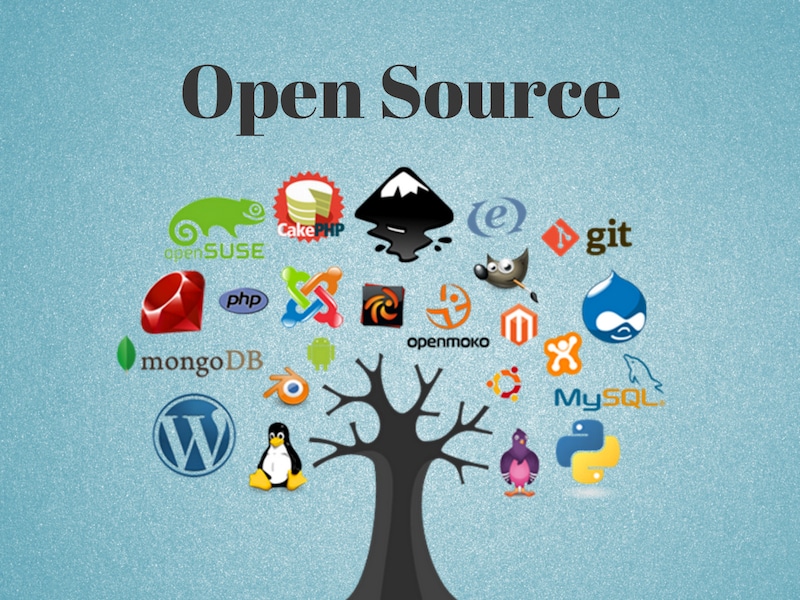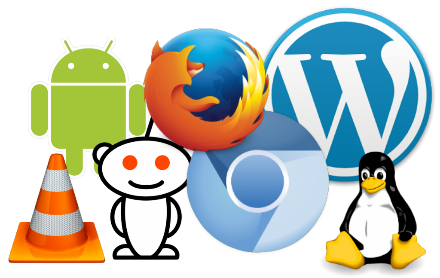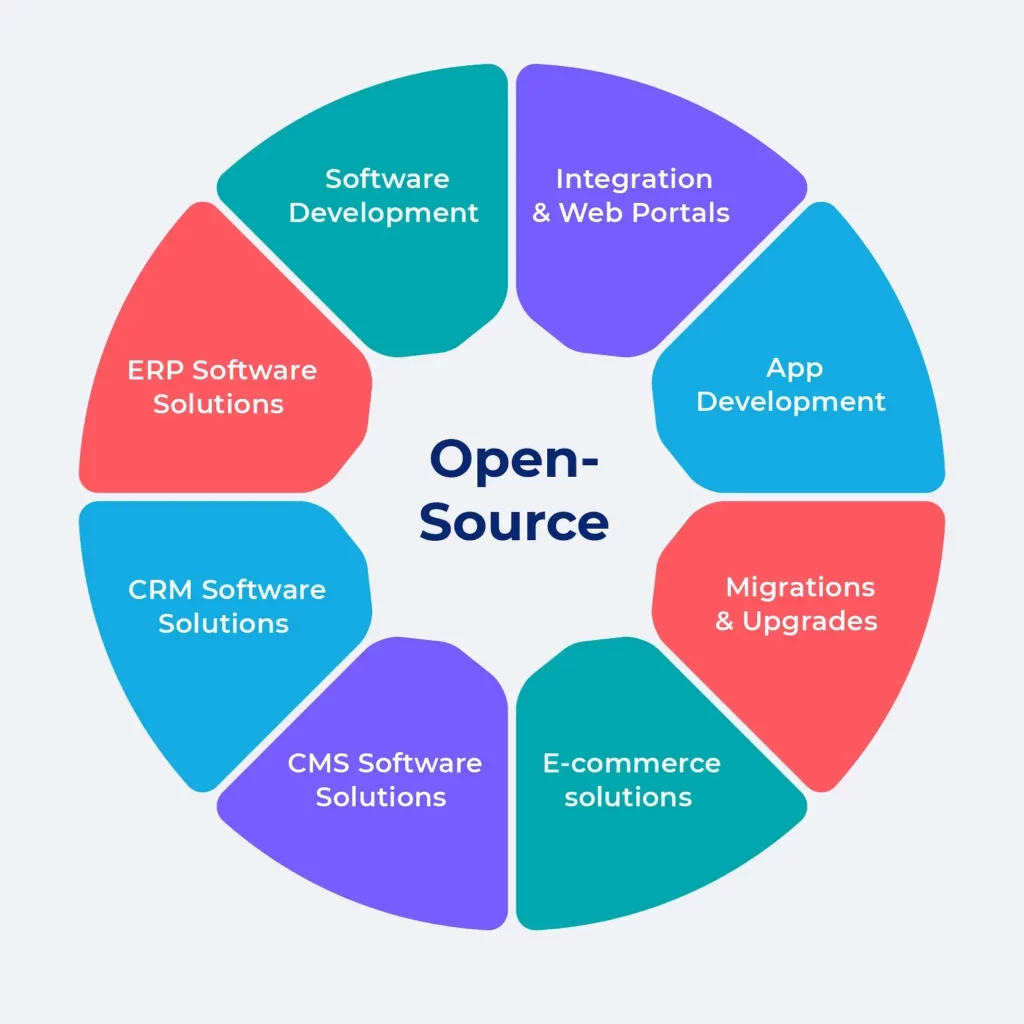
A. What is open-source software?
Open source software is software with source code that anyone can inspect, modify, and enhance.
“Source code” is the part of the software that most computer users don’t ever see; it’s the code computer programmers can manipulate to change how a piece of software—a “program” or “application”—works. Programmers who have access to a computer program’s source code can improve that program by adding features to it or fixing parts that don’t always work correctly.
B. Origin & Development
1. The idea of making source code freely available originated in 1983 from an ideological movement informally founded by Richard Stallman, a programmer at MIT. Stallman believed that software should be accessible to programmers so they could modify it as they wished, with the goal of understanding it, learning about it, and improving it. Stallman began releasing free code under his own license, called the GNU Public License. This new approach and ideology surrounding software creation took hold and eventually led to the formation of the Open Source Initiative in 1998.
2. Open Source Software was also popularised by Software Engineer Eric S. Raymond in his 1997 essay, “The Cathedral and the Bazaar”, where he discusses the development of a software program called “Fetchmail” and what he called “Linus Law”, which states that “given enough eyeballs, all bugs are shallow.” Linus is, of course, Linus Torvalds, the main creator of the Linux open-source kernel.
The developers of Fetchmail didn’t make money since their software was free, so a team of volunteers developed Fetchmail in their spare time. There was no company or organization behind it.
C. How does OSS work?
Open source code is usually stored in a public repository and shared publicly. Anyone can access the repository to use the code independently or contribute improvements to the design and functionality of the overall project.
OSS usually comes with a distribution license. This license includes terms that define how developers can use, study, modify, and most importantly, distribute the software. According to the Synopsys Black Duck® KnowledgeBase, five of the most popular licenses are:
1. MIT License
2. GNU General Public License (GPL) 2.0—this is more restrictive and requires that copies of modified code are made available for public use
3. Apache License 2.0
4. GNU General Public License (GPL) 3.0
5. BSD License 2.0 (3-clause, New or Revised)—this is less restrictive.
When source code is changed, OSS must include what was altered as well as the methods involved. Depending on the license terms, the software resulting from these modifications may or may not be required to be made available for free.

D. What are some examples of OSS?
Chrome
GNU/Linux
Blender
Mozilla Firefox
GNU Compiler Collection
VLC media player
Python, Javascript, PHP, HTML, etc
SugarCRM
Shotcut
GIMP
WordPress, Joomla, etc
VNC
Apache web server
LibreOffice
E. How they Make Money
1. Donations
They make money through donations or crowdfunding. This is usually done through a website link to a payment processor where users can donate money to the developers, by using services like BuyMeCoffee, etc
The amount of money donated varies depending on the project and the donor.
2. Crowdsourcing
— i.e., the practice of assigning software development tasks such as design, documentation, coding, or testing to members of the general public as a means to improve the software, and therefore stimulate other organizations to sponsor the further development of the project, or separate similar projects that can be monetized.
Alternatively, open-source developers may partner with funding organizations from the outset. The organizations support the development of open-source software via grants and stipends.
3. Ads on software
Placing ads on software or on official software sites brings in ad revenue as users visit the sites.
They can offer an option for users to pay/donate to remove ads.
4. Certification Fees
In this monetization model, users get certified in using the software. The company may also offer training courses.
Companies may also franchise their software. In this model, open-source software providers garner a network of commercial partners, who pay to become certified and therefore use the provider’s name and logo. These partners then provide a proportion of revenue to the open-source companies.
5. Dual Licensing
With dual licensing, the company offers two different licenses for the software. One is a closed-source license, and the other is an open-source license. The open-source license is usually free to use. But if you want to use the closed-source version, which usually comes with additional support or functionality, you have to pay a fee.
One variation of the open-source dual licensing model is known as the “open core” model. This is where the developer offers a “core” or feature-limited version of the software, while also offering commercial versions as proprietary software.
One well-known example of open-core dual licensing is Oracle’s MySQL database management system, which is dual licensed under a proprietary license and the GNU General Public License. The open-source version is the core offering, while proprietary versions are available that offer additional functionality and enterprise support.
6. Paid feature requests
If you happen to find a couple of companies using your project, you can offer paid feature requests. In other words, you develop new features based on a company’s request. In return, they pay you for developing the features they want.
It’s one of the most straightforward models to make money from open-source software. Even a small project can find a few companies that are interested in using their open-source software. Often, it’s cheaper for them to hire you as a freelancer to develop the new functionality they need than having their developers spend time figuring out the codebase and adding new functionality.
7. Many companies build paid offerings on top of their open-source solutions for e.g. grafana’s code is open but if you like their products and don’t wanna go through the hassle of managing them on your own you can pay for grafana cloud and get the ease of use that comes with it.
8. Selling other Things like merchandise and additional content, but these don’t necessarily bring incredible amounts of money.

Know of Any other ways To make money from open-source software? Write it in the comment below.
Tags: educate finance hacks making money open-source technology Tips


